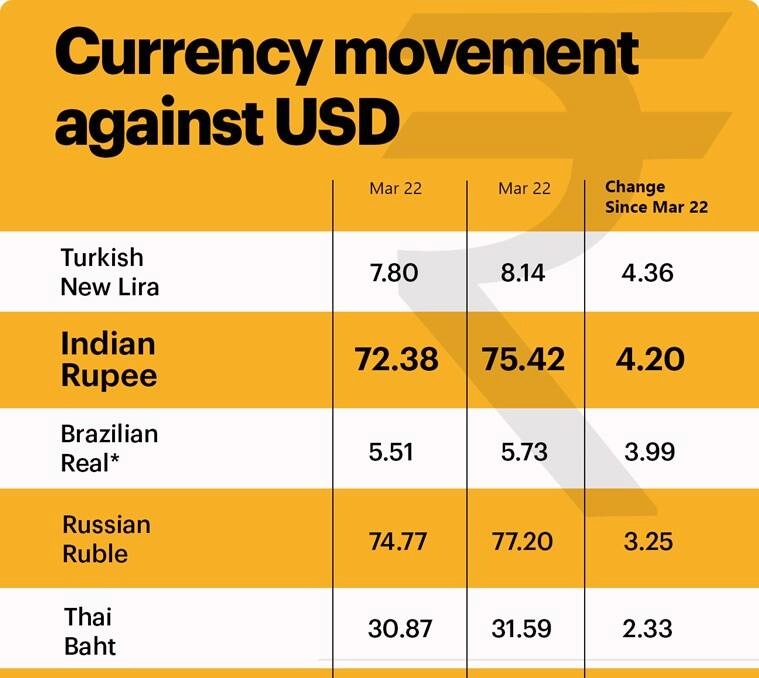Indian Economy
Depreciation in Rupee
- 15 Apr 2021
- 5 min read
Why in News
Recently, the Indian Rupee depreciated to a nine-month low of 75.4 against the USD, it is one of the biggest losers among the emerging market currencies.
- Over the last three weeks since 22nd March 2021, Rupee has lost 4.2% against the USD.
Key Points
- Reasons for the Decline:
- Rising Covid Cases:
- Strengthening of USD:
- The strengthening of USD in line with expectations of better growth in the US economy, has also put pressure on the Rupee.
- Reserve Bank of India's (RBIs) G-SAP:
- RBI’s announcement of Government Securities Acquisition Programme (G-SAP) programme to infuse liquidity has also put additional pressure on the Rupee.
- This is being read as a sort of quantitative easing policy the global central banks had followed, in which the RBI will support the government’s elevated borrowing programme through infusion of liquidity.
- Decreasing FPI Investments:
- Another factor that is putting additional pressure is the decreasing support of the Foreign Portfolio Investors (FPIs), who pumped huge inflows into Indian equity markets between October 2020 and February 2021.
- While the FPIs invested a net of Rs. 1.94 lakh crore between October 2020 and February 2021 (in the Indian markets), in the month of April 2021 they have pulled out a net of Rs 2,263 crore (till date).
- Another factor that is putting additional pressure is the decreasing support of the Foreign Portfolio Investors (FPIs), who pumped huge inflows into Indian equity markets between October 2020 and February 2021.
- Rising Covid Cases:
- Impact of Depreciating Rupee:
- Losers:
- People Importing from outside.
- People seeking foreign education.
- People travelling abroad.
- People investing abroad.
- People seeking medical treatment abroad etc.
- Gainers:
- People exporting from India.
- People receiving remittances from Non Resident Indian (NRI).
- Foreign tourists as travel to India gets cheaper.
- Losers:
Currency Depreciation
- Currency depreciation is a fall in the value of a currency in a floating exchange rate system.
- In a floating exchange rate system, market forces (based on demand and supply of a currency) determine the value of a currency.
- Rupee depreciation means that rupee has become less valuable with respect to dollar.
- It means that the rupee is now weaker than what it used to be earlier.
- For example: USD 1 used to equal to Rs. 70, now USD 1 is equal to Rs. 76, implying that the rupee has depreciated relative to the dollar i.e. it takes more rupees to purchase a dollar.
- Some of the factors that influence the value of a currency:
- Inflation
- Interest rates
- Trade deficit
- Macroeconomic policies
- Equity market
- Currency depreciation increases a country’s export activity as its products and services become cheaper to buy.
- The RBI intervenes in the currency market to support the rupee as a weak domestic unit can increase a country’s import bill.
- There are a variety of methods by which RBI intervenes:
- It can intervene directly in the currency market by buying and selling dollars.
- If the RBI wishes to increase the rupee value, then it can sell dollars and when it needs to bring down rupee value, it can buy dollars.
- The central bank can also influence the value of rupee by the way of monetary policy.
- RBI can adjust the repo rate (the rate at which RBI lends to banks) and the liquidity ratio (the portion of money banks are required to invest in government bonds) to control rupee.
- It can intervene directly in the currency market by buying and selling dollars.







